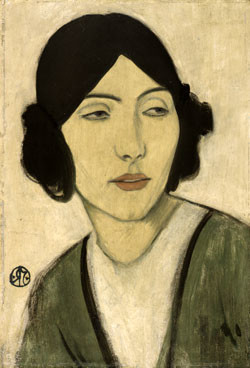Toss Woollaston
Aotearoa New Zealand, b.1910, d.1998
Huinga
- 1933
- Oil on hardboard
- Purchased, 1974
- 266 x 375mm
- 74/76
- View on google maps
Tags: barns, Expressionist (style), green (color), hills, landscapes (representations), natural landscapes
When Toss Woollaston briefly attended the Canterbury College School of Art in 1931 he found the formal academic approach of the lessons boring and immensely frustrating. He quit the school and moved to Dunedin to attend the King Edward Technical College so that he could study under Robert Field. Woollaston relished the informality of Field’s approach to teaching art – there was a freedom that suited his temperament. Woollaston grew up in the small rural community of Huinga, Taranaki, and this early painting showcases the spontaneous, individual and highly modernist style he adapted under Field’s teaching. Woollaston once stated he ‘wanted to paint the sunlight but after it has been absorbed into the earth.’
(March 2018)
Exhibition History
Brought to light, November 2009- 22 February 2011
By the 1950s Toss Woollaston had established his reputation in New Zealand as a leading modernist painter. He worked quickly and spontaneously in a gestural manner that infused his works with much immediacy and energy As a pioneering modernist working in mid-twentieth-century New Zealand, Woollaston faced many challenges. It was with difficulty that he managed to continue painting while supporting his family, and it was not until the late 1960s that he was able to commit himself fully to his art. He moved to Greymouth in 1949 and the West Coast landscape is the subject of some of his most vigorous artistic treatments. Portraiture was also an important element in Woollaston’s output and something that he pursued throughout his career. Of his approach to portrait painting he commented: 'I have to observe (the subject), sometimes for quite a long time, till I find their most natural attitudes and movements. I do not copy their actual physical movements...but I have a rich means of suggesting them - the lean and tilt of the different planes and volumes in contrasting directions - what I understood by Hans Hofmann’s term movement and tension on the picture planes...'


